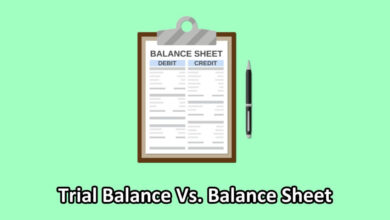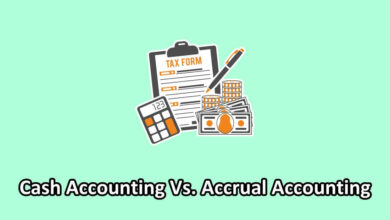When navigating the intricate world of finance, we often encounter terms like ‘lien’ and ‘pledge,’ akin to puzzle pieces that form the larger picture of financial transactions. Picture this: your assets locked in a financial dance, one holding on firmly (lien), the other standing as a solemn promise (pledge).
A lien represents a legal right to possess or sell the debtor’s property in the case of non-payment. Conversely, a pledge involves the delivery of possession of a property to the lender, serving as collateral until the obligation is fulfilled. Now, let’s delve into these financial safeguards.
Lien Vs Pledge (A Comparison)
| Lien | Pledge |
|---|---|
| A lien is a legal right or interest granted to a creditor over a debtor's property, providing security for a debt without involving the transfer of possession. | A pledge is a financial arrangement where a borrower transfers possession of a tangible asset to a lender as collateral for a debt. |
| In a lien, the creditor has a legal claim over the debtor's property, providing security without possession. | A pledge involves a possessory interest where the lender physically holds the pledged asset as collateral. |
| A lien doesn't require physical possession, granting the creditor a legal claim over the property. | In a pledge, possession is crucial. The lender has physical control over the pledged asset until the borrower fulfills their financial obligation. |
| A lien doesn't transfer ownership; the debtor retains ownership, and the lien is a legal encumbrance. | In a pledge, although possession is transferred to the lender, ownership remains with the borrower. |
| Liens are versatile, applying to various assets from real estate to financial assets. | Pledges are more specific and are commonly used for tangible assets like jewelry or securities. |
| Enforcing a lien typically involves legal proceedings, requiring the creditor to go through the legal system to seize or sell the property. | Enforcement of a pledge is often more straightforward. The lender, holding physical possession, can quickly liquidate the pledged asset in case of default. |
What is a Lien?
A lien, essentially a legal right, empowers a creditor to seize and sell a debtor’s property if they fail to meet their financial obligations. This legal claim acts as a protective shield for lenders, ensuring they have recourse in the face of default.
In essence, it establishes a legal foundation that safeguards the financial interests of the creditor, reinforcing the integrity of lending transactions.
Types of Liens
- Specific Lien: A specific lien is tied to a particular asset or property, offering creditors a claim over that specific item.
- General Lien: In contrast, a general lien extends its reach across all the debtor’s assets. This broader claim is common in scenarios like business loans, where various assets contribute to the security of the loan.
What is a Pledge?
A pledge involves the physical delivery of possession of a property to the lender as collateral, adding an extra layer of security. This tangible commitment ensures that the lender can access and, if necessary, liquidate the pledged asset to recover the loan amount.
Types of Pledges
- Possessory Pledge: In this form, the lender physically possesses the pledged asset. A common example is when a borrower pledges jewelry to a pawnbroker, allowing the lender to hold the item until the loan is repaid.
- Non-Possessory Pledge: Unlike possessory pledges, non-possessory pledges don’t involve the lender physically holding the asset. Instead, legal documentation confirms the pledge, offering security without the necessity of transferring the asset.
Key Differences Between Lien and Pledge
Here are five key distinctions that shape their roles in securing transactions:
Possession vs. Claim:
- Lien: A lien doesn’t necessitate the physical possession of the debtor’s property. Instead, it grants the creditor a legal claim over the property. The creditor can enforce this claim through legal means without taking actual possession of the asset.
- Pledge: In a pledge, possession is a crucial aspect. The lender has physical control over the pledged asset until the borrower fulfills their financial obligation. This possession provides an immediate avenue for the lender to recover their funds.
Transfer of Ownership:
- Lien: A lien doesn’t involve the transfer of ownership. The debtor retains ownership of the property, and the lien is a legal encumbrance on that property. The creditor’s rights are limited to the recovery of the owed debt through the identified property.
- Pledge: While possession is transferred in a pledge, ownership remains with the borrower. The lender has the right to possess and sell the asset only in the event of default. Once the debt is repaid, ownership reverts to the borrower.
Applicability:
- Lien: Liens are versatile and can apply to a broad range of assets. From real estate to financial assets, liens can secure various types of transactions, making them a flexible tool in financial agreements.
- Pledge: Pledges are often more specific and are commonly used for tangible assets like jewelry, securities, or valuable goods. The tangible nature of the pledged asset makes it well-suited for certain types of transactions.
Enforcement Process:
- Lien: Enforcing a lien typically involves legal proceedings. The creditor must go through the legal system to seize or sell the property tied to the lien. This process can be time-consuming and may vary based on jurisdiction.
- Pledge: Enforcement of a pledge is often more straightforward. The lender, holding physical possession, can quickly liquidate the pledged asset in the event of default, streamlining the enforcement process.
Practical Applications
In the corporate world, liens and pledges play pivotal roles. Liens secure loans, while pledges, with their tangible commitment, are vital in scenarios like securing business loans or financing expansions.
The impact of these financial safeguards is felt on both ends. Borrowers benefit from enhanced credibility, while lenders gain a safety net against potential defaults. It’s a symbiotic relationship balancing risk and trust.
When drafting contractual agreements, understanding the implications of choosing a lien or a pledge is crucial. Legal nuances, the nature of assets, and the overall financial strategy should be meticulously considered to ensure a robust and fair arrangement.
Conclusion
As we wrap up this exploration of liens and pledges, it becomes clear that these financial safeguards are the unsung heroes of financial stability. Whether it’s the expansive reach of a general lien or the tangible commitment of a possessory pledge, these instruments serve as the bedrock of trust in the intricate dance of finance.
As you navigate your financial journey, may the understanding of liens and pledges be your guiding light, ensuring a secure and well-informed path forward.


